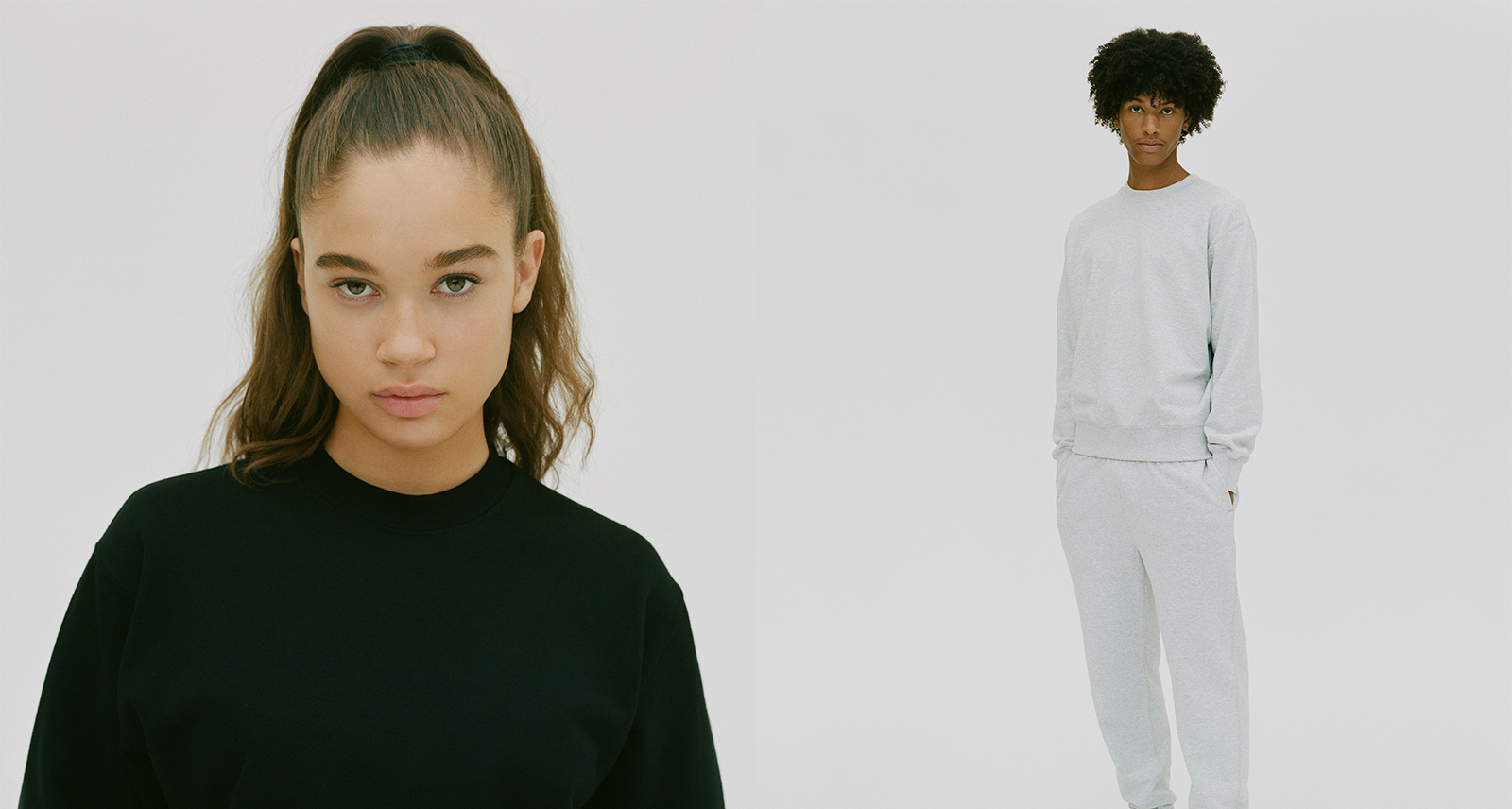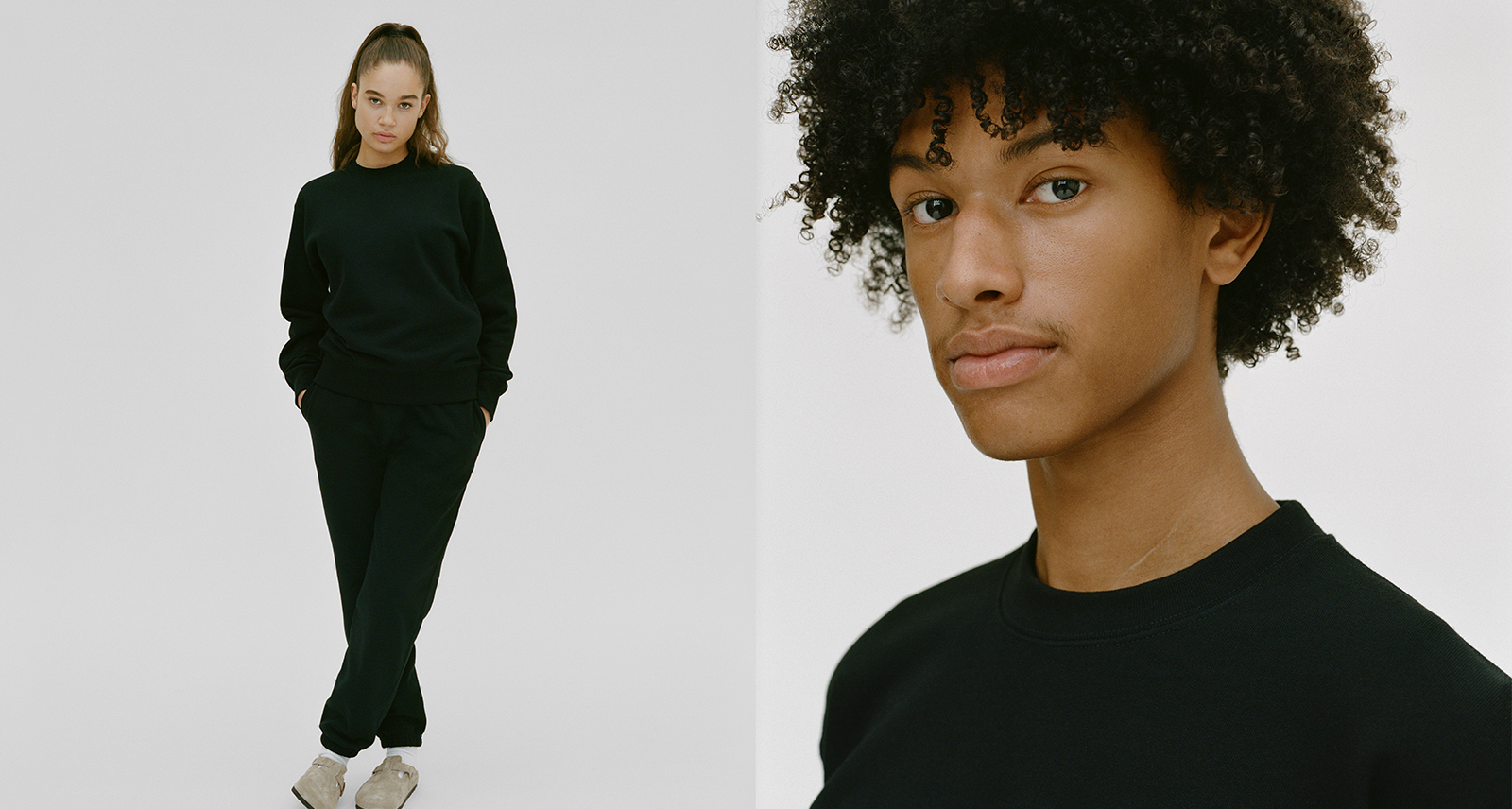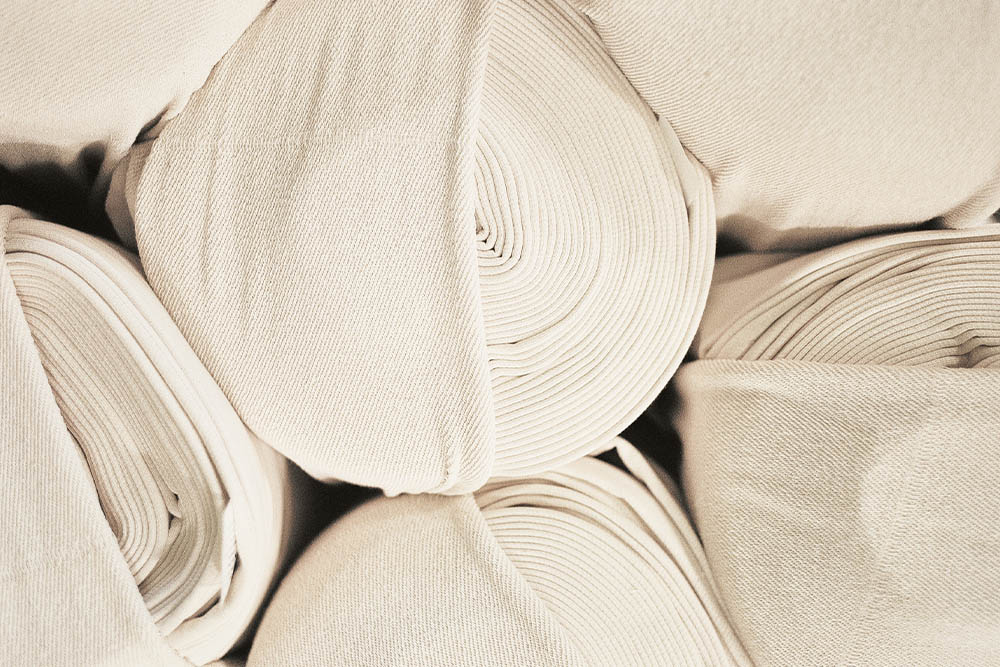Body of Work Is Redefining Canadian Sportswear
Canada’s fashion manufacturing industry may not be the world’s most robust, but if there’s one thing we do well, it’s sweats and sportswear. That infrastructure is what Brittney MacKinnon and Dwayne Vatcher sought to tap into when they dreamt up Body of Work, a new premium sportswear label that’s from — and made in — Toronto.
Body of Work recently debuted its inaugural collection, which includes high-quality staples like French terry sweats and boxy cotton tees. Everything is designed, knitted, dyed, and cut and sewn in Canada, with production taking place just an hour away from the brand’s design studio. The result is an understated collection of well-considered, locally made pieces that are more focused on functionality and fit than frills and in-your-face branding.

The collection has been a long time coming for MacKinnon and Vatcher. The pair spent the past decade working for brands like Aritzia, Reigning Champ, OVO, and HAVEN before realizing there was an opportunity to launch a sportswear brand that offered a different take on what it means to live an active lifestyle. Unlike most brands that tend to position physical activity as labour-intensive and prescriptive, the pair says Body of Work approaches fitness with a sense of ease, drawing references from classic sportswear and the tranquility of nature.
SHARP recently sat down with MacKinnon and Vatcher to discuss their take on sportswear, the importance of sustainability, and what’s next for the burgeoning Canadian label.
First off, how did Body of Work begin? What’s the story there?
Brittney MacKinnon: I think for both Dwayne and I, our relationship with activity has changed over time. Whether you’re somebody who played a lot of sports growing up or maybe didn’t have such an intimate relationship with activity, it becomes a necessity as you get older. For us, Body of Work was about creating something that made activity feel really approachable and enjoyable.
Dwayne Vatcher: We’ve both worked in apparel for about 10 years. Brittney was at the head office of Aritzia in Vancouver and I was at Reigning Champ as a marketing manager. We’ve been around apparel for our whole lives and have learned a lot of stuff along the way and wanted to create our own perspective.
The Canadian sportswear market is a fairly crowded one. What sets Body of Work apart?
BM: I think there’s an idea of what activewear or sportswear is supposed to look like [and we tried to question that]. So much of your day can be spent moving — like going for walks, going to and from class, or whatever the case may be. We wanted to be able to offer something for that kind of activity that you’re doing all the time. I also think simplicity is a big part of the appeal. On one hand, a person who loves adornment might not understand it, but there are people out there who look for simplicity and are more focused on the quality of the fabric, where it comes from, and the people behind it. There’s a heart and soul to it, which I think is a huge differentiator. Everything you see come from us. We design everything and work really closely with the manufacturers.
DV: Another thing that’s a little bit different than other brands is that we custom develop our fabric. Some brands just import fabrics from overseas and do the cut and sewing in Canada. We are very specific and are developing new fabrics with knitting mills.
With sportswear, how important is functionality?
DV: When it comes to functionality, you might think about technical design or synthetic fabrics. But when we think about functionality, it’s the simple things: the depth of the pocket bag or the stitch on a sweatshirt. We put extreme consideration into all those details that contribute to ease of use — even down to the seasonality of the fabric. For example, we wanted to make sweatshirts that could be worn year-round. So, in the summer, you’re not feeling extremely hot, but in the winter, you’re warm. For us, it’s about those details that people don’t usually associate with functionality.
BM: The fact that they’re simple in design and not [plastered with logos], for example, means that you can incorporate it into your life more. And part of its functionality is that it’s not gendered. Everything is unisex; they are clothes made for everybody.
Is it essential for you to keep production local?
BM: It’s kind of an open secret that Toronto has some of the best fleece and knitwear manufacturing in the world. Having worked in apparel and sports industry for a number of years, we’ve known for a long time that the industry was here, so when the time came there was no question that we were going to work with these world class factories and professionals. We’re really grateful to have access to it; we are able to speak with our partners face-to face to work through our ideas.
DV: Our brand is self-funded, which is a challenge because manufacturing locally is more expensive, but we’re just doing what we feel would we appreciate and respect.
Given that it’s 2021, what’s your approach to sustainability?
BM: Sustainability is another buzzword, but we’ve put a lot of thought into what sustainability means for us, and I think producing in Canada is a big part of it. We’re so fortunate to have a great garment industry in our backyard. We can go meet with our manufacturers in person; we’re not shipping samples across the world. Local manufacturing is something we’re going to continue to use to minimize our environmental footprint. Making clothes that last is also really important to us. Our garments wash and wear well, which means they will hold space in your wardrobe for longer and maybe stop you from buying something else that will deteriorate much faster. We’re hoping to create a product that is made to last and is timeless. The quality, the weight of our fabrics, the stitches that we choose — they’re all intentionally chosen to make a long-lasting product.
DV: We’re trying to create a brand that isn’t in your face trying to sell you new stuff all the time. We’re trying to be responsible and encourage people to have less of a consumerist mindset. I think the biggest thing that we can do is try and push people to be more thoughtful when purchasing things.
BM: Over time, I’ve learned not to consider buying anything unless it’s going to last at least 10 years. The only way a piece of clothing leaves my wardrobe is if there’s an irreparable hole in it or if it just doesn’t make sense to have anymore. I take pride in having things that are high quality with a story. If we all took that approach to how we purchase, it could be incredibly impactful. I hope that [our brand] stands for that and influences the way people purchase clothes.
What’s next?
BM: I think continuing to grow slowly and meaningfully is what’s most important to us. We want to build a base of people that really appreciate our brand for what it is, while also continuing to improve and make thoughtful products. Right now, we’re working on organic fabrics, for example, because that was something that we really wanted when we launched, but it wasn’t possible for so many reasons.
DV: In terms of the future, we like to think that if we just do what we believe in and care about then things will fall into place for us. We don’t look at it in a way where we need X number of retail stores or that we must do this or that. It’s more organic growth we’re looking for. But one thing that we do think is important is having an international perspective. We’re small and modest, but we have global ambitions in the sense we see places like Japan, or the U.K. as real potential markets that will appreciate what we do. Although we want to grow in a very thoughtful manner, we do think that we can have a global impact with what we’re doing.
Photography by Fahim Kassam & Nathan Legiehn




























